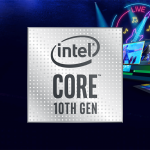Physically Based: Unity’s New High Def Render Pipeline Template

Physically Based: Unity’s New High-Def Render Pipeline Template
Unity recently unveiled their new High Def Render Pipeline (HDRP) template which introduces beginners to multi-room lighting setups, physically based lighting intensities, and a whole lot more. As part of the process, they enlisted a group of experienced game industry artists (Assassin’s Creed, Batman: Arkham, Crysis, FIFA, Grand Theft Auto, Need for Speed, Red Dead Redemption, and Watch Dogs) to create a sample scene. The artists in this group specialize in various disciplines including VFX, lighting, and 3D environments, as well as technical artistry.
The need for a new template
According to Unity, the new HDRP template was designed as a necessary learning tool because some HDRP techniques and concepts may be difficult for newcomers—especially those unfamiliar with industry standards and photographic concepts.
In recent years, most users relied on the old small construction site template which featured an incorrect lighting setup. With sun intensity set at ten thousand lux (ten times lower than the physical version) the setup was severely impacted—especially on the exposure and calibration of other light sources. The result was frustration and confusion, not only for beginners but any artists and designers who required a physically based workflow.
HDRP’s Volume System was also daunting for beginners unacquainted with the concepts of global volumes and local overrides essential to render settings on a per-location basis. Comprised of one area only, the previous template was not able to demonstrate the volume system’s real potential.
As good application providers do, Unity also listened to the concerns of their users and provided more examples for interior and exterior transitions which are always difficult due to extreme exposure variations between a darker, artificially lit interior and a brightly lit outdoor area.
New template features
Set up in a physically based way with realistic sun intensity at 100,000 lux and correct exposures for each location, the new template provides beginners with a solid introduction to lighting scenes. You can also experiment within the template, reassured that the lighting is correctly tuned.
Upon opening the HDRP template, you will find three unique (but interconnected) rooms with distinctive lighting. Each area has its own set of local volumes to handle the exposure using a new feature called Automatic Histogram mode. They also include additional HDRP settings like Volumetric Fog and White Balance to “simulate the natural action of your brain or the auto white balance of a camera.” Unity encourages users to explore and appreciate the template environment (and get a good feel for its scale) by starting in Play mode.
As new HDRP features emerge, the template will be updated, so be on the lookout for future releases of Unity and HDRP. In the meantime, we strongly encourage you to check out Pierre Yves Donzallaz’s detailed blog on the HDRP packed with instructions, details, valuable links, and information about educational webinars and more. It’s a must-read by an experienced lighting artist and expert in the field of real-time rendering. Pierre’s resume includes the Crysis series, Ryse: Son of Rome, Grand Theft Auto V, and Red Dead Redemption 2. He is currently a member of the Unity R&D Graphics team.
Whether desk-side rendering or on a data centre platform, BOXX systems optimize Unity features and accelerate your workflow, enabling artists, designers, and engineers to create and iterate faster than ever before.





